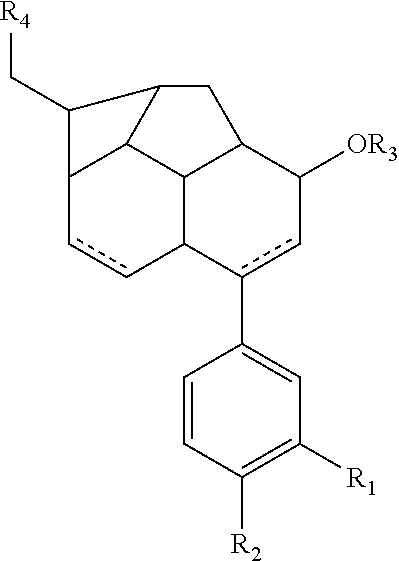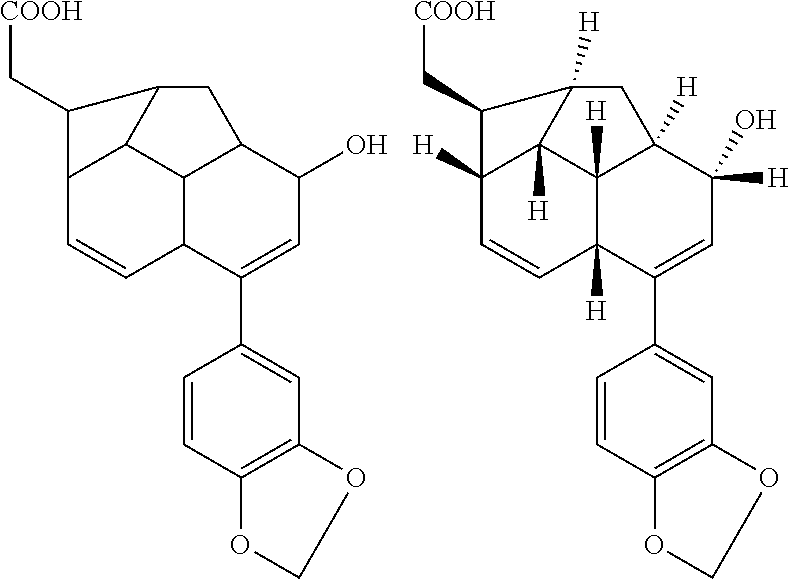Method for the Diagnosis, Prognosis and Treatment of Prostate Cancer Metastasis
- Summary
- Abstract
- Description
- Claims
- Application Information
AI Technical Summary
Benefits of technology
Problems solved by technology
Method used
Image
Examples
example 1
ression is Associated with Risk of Metastasis, in Particular Bone Metastasis
[0360]Immunohistochemistry Analysis
[0361]c-MAF immunostaining was performed on TMAs. This TMA was built on glass slides and IHC was done using the Dako Link Platform according the Operating Procedure
[0362]Briefly, the immunostaining was done on 3 m TMA tumor tissue sections, placed on positively charged glass slides (Superfrost or similar) in a Dako Link platform. After deparaffinization, heat antigen retrieval was performed in pH 6.1, 0.01 mol / L citrate-based buffered solution (Dako). Endogenous peroxidase was quenched. The mouse polyclonal anti-c-MAF antibody (Santa Cruz) 1:100 dilution was used for 30 minutes at room temperature, followed by incubation with an anti-rabbit Ig dextran polymer coupled with peroxidase (Flex+, Dako). Sections were then visualized with 3,3′-diaminobenzidine (DAB) and counterstained with Hematoxylin.
[0363]c-MAF immunostaining was scored by a computerized algorithm. Nine represen...
example 2
6g22-24 Chromosomal Region (CNA, Copy Number Alteration) is Associated with Risk of Bone Metastasis
[0371]We tested whether a gain in chr16q22-q24, which included c-MAF genomic loci, is associated with risk of bone metastasis in Prostate cancer patients. To this end we used a method that identifies chr16q22-q24 amplifications, in this case by means of a chr16q23 and chr14q32 dual fluorescence in situ hybridization (FISH) probe to measure the number of copies of the chr16q22-24 region. We also used the chr14q32 probe to normalize tumor polyploidy.
[0372]Fluorescent in situ hybridization (FISH) analysis of 16q23, within the 16q22-24, genomic region amplification, including the c-MAF gene, was performed on TMA above described using a fluorescence DM2000 Leica microscope according to the Operating Procedure. We used a SpectrumOrange probe mix that flanks the MAF gene genomic region and is composed of two segments that are each approximately 350 kb with an approximately 2.2 Mb gap. The cen...
example 3
l Validation of c-MAF in a Bone Metastasis Colonization Assay
[0380]The causal contribution of c-MAF has been functionally validated in a bone metastasis colonization assay using preclinical experimental xenograft mouse models. Androgen resistant prostate cancer cell lines, namely DU-145 labeled with the GFP / luciferase vector were used and inoculated into immunodeficient male mice by means of intra-ventricular injection.
[0381]The standard approach used was gain of function experiments. c-MAF was expressed in DU-145 parental cell derivatives that express low levels of c-MAF in order to validate the function of c-MAF in metastasis (FIG. 1(A)). c-MAF gene bone metastasis functions were determined in vivo using bioluminescence detection of metastatic cells inoculated in the mouse intracardiacally. Cells were generated expressing each c-MAF isoform collectively. Parental DU-145 cells with or without c-MAF (short and long isoforms collectively) were injected into the left ventricle of a mo...
PUM
| Property | Measurement | Unit |
|---|---|---|
| Volume | aaaaa | aaaaa |
| Volume | aaaaa | aaaaa |
| Fraction | aaaaa | aaaaa |
Abstract
Description
Claims
Application Information
 Login to View More
Login to View More - R&D
- Intellectual Property
- Life Sciences
- Materials
- Tech Scout
- Unparalleled Data Quality
- Higher Quality Content
- 60% Fewer Hallucinations
Browse by: Latest US Patents, China's latest patents, Technical Efficacy Thesaurus, Application Domain, Technology Topic, Popular Technical Reports.
© 2025 PatSnap. All rights reserved.Legal|Privacy policy|Modern Slavery Act Transparency Statement|Sitemap|About US| Contact US: help@patsnap.com



